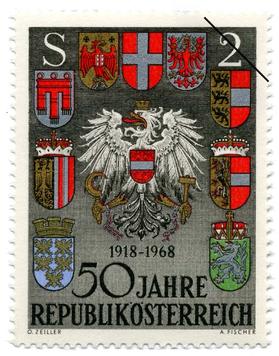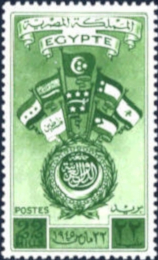
Austria and other European nations maintained an extensive system of post offices in the Ottoman Empire, typically motivated by the unreliable postal system of the Ottomans.

Austria and other European nations maintained an extensive system of post offices in the Ottoman Empire, typically motivated by the unreliable postal system of the Ottomans.
Austria gained permission in 1721 from the Ottoman Empire to operate a postal service for official correspondence only and subsequently this was extended to the opening of post offices and carrying mail for merchants. [1] This resulted in 1748 with the establishment of a post office in Galata outside of Istanbul, and eventually extended to 65 locations [2] throughout the Balkans and the eastern Mediterranean. The oldest known cancellation is a double linear "CONSTAN-TINOPEL" in 1787. [3] The latest remaining Austrian post offices in Turkey area were closed on 30 September 1914. [4]
Beginning in 1863, stamps of Lombardy-Venetia were used: 2 to 15 soldi, which can be recognized only by the cancellation. After the losses of Lombardy in 1859 and Venetia in 1866, [5] Austria issued in 1867 and 1883 specific stamps, in appearance identical to Austrian stamps of the same period, but valued in soldi (2 to 50 soldi). Details on Levant Austria post-offices using the 1867 issue are given in Part III Postämter in der Levante. [6] In 1886 this was changed to paras and piasters to match the Turkish money already used by other countries, by surcharging the existing stamps of the offices, with further issues between 1888 and 1907: values ranging from 10 paras to 20 piasters. [7]
The Jubilee issue of 1908-1914 included directly values in paras and in piasters.
Some of the 1867-1883 soldi issues are rather common in unused state, contrary to the kreuzer equivalent. An extreme case is the 2 soldi yellow fine beard, lately issued in 1882: the ratio in value is 5000! [8]

The first items of Postal stationery to be made available to Austrian post offices in the Turkish Empire were envelopes in 1863. [9] A total of 10 different envelopes in soldi currency were issued up to 1877, these were valid for use till 31 October 1884. Only one envelope was ever issued in French currency in 1908 (5 Centesimi for Jerusalem).
Postal stationery postcards were first issued in 1873 [10] in soldi currency, 5 different postcards were issued. Then in 1888 these were replaced by an issue in Turkish currency, a total of 13 different items were issued before these were replaced by postcards in French currency in 1903. A total of 8 different postcards are known in French currency.
Only one 10 soldi lettercard was issued in 1886. [11] Four different 1 Piaster lettercards were issued in 1888, 1890, 1900 and 1908.
During the period of Turkish currency three different newspaper wrappers were issued in 1899, 1900 and 1908. [12] One newspaper 5 Centimes wrapper was issued in 1908 for Jerusalem. [13]

An overprint is an additional layer of text or graphics added to the face of a postage or revenue stamp, postal stationery, banknote or ticket after it has been printed. Post offices most often use overprints for internal administrative purposes such as accounting but they are also employed in public mail. Well-recognized varieties include commemorative overprints which are produced for their public appeal and command significant interest in the field of philately.

This article deals with the stamps and postal history of the Austrian Empire, Cisleithania within Austria-Hungary, and the Republic of Austria.

The French post offices in the Ottoman Empire were post offices in various cities of the Ottoman Empire run by France between 1812 and 1923. France was one of a half-dozen European countries, the others being Austria, Russia, Great Britain, Germany and Italy, which had been granted the right to maintain post offices within the Empire. This privilege was distinct from the so-called "Capitulations" which, since the 16th century, had been negotiated with a much larger number of countries and which granted some extraterritorial rights to citizens and commercial enterprises of those countries. Initially restricted to consular mail, these post offices could soon be used by foreign and local businesses and individuals, provided they used the postage stamps of the post office concerned. The system came to end with the Treaty of Lausanne in 1923.

Eastern Rumelia or Eastern Roumelia was an autonomous province (vilayet) in the Ottoman Empire from 1878 to 1908; however, it was under Bulgarian control beginning in 1885. The province is remembered today by philatelists for having issued postage stamps from 1881 on, although a postcard was issued locally for internal use in 1880.
This article provides an overview of the Austrian post-offices presence in Crete and the use of French currency on Austrian stamps in the Ottoman Empire.
Each article in this category is a collection of entries about several stamp issuers, presented in alphabetical order. The entries are formulated on the micro model and provide summary information about all known issuers.
Each "article" in this category is a collection of entries about several stamp issuers, presented in alphabetical order. The entries are formulated on the micro model and so provide summary information about all known issuers.
Each "article" in this category is a collection of entries about several stamp issuers, presented in alphabetical order. The entries themselves are formulated on the micro model and so provide summary information about all known issuers.
Each "article" in this category is a collection of entries about several stamp issuers, presented in alphabetical order. The entries are formulated on the micro model and so provide summary information about all known issuers.
Each "article" in this category is a collection of entries about several stamp issuers, presented in alphabetical order. The entries are formulated on the micro model and so provide summary information about all known issuers.
Each "article" in this category is a collection of entries about several stamp issuers, presented in alphabetical order. The entries are formulated on the micro model and so provide summary information about all known issuers.
Each "article" in this category is a collection of entries about several stamp issuers, presented in alphabetical order. The entries are formulated on the micro model and so provide summary information about all known issuers.
Each "article" in this category is a collection of entries about several stamp issuers, presented in alphabetical order. The entries are formulated on the micro model and so provide summary information about all known issuers.

This is a survey of the postage stamps and postal history of Montenegro.

The postal history of Turkey and its predecessor state, the Ottoman Empire, dates to the 18th century when foreign countries maintained courier services through their consular offices in the Empire. Although delayed in the development of its own postal service, in 1863 the Ottoman Empire became the second independent country in Asia to issue adhesive postage stamps, and in 1875, it became a founding member of the General Postal Union, soon to become the Universal Postal Union. The Ottoman Empire became the Republic of Turkey in 1923, and in the following years, its postal service became more modernized and efficient and its postage stamps expertly designed and manufactured.

The German post offices abroad were a network of post offices in foreign countries established by Germany to provide mail service where the local services were deemed unsafe or unreliable. They were generally set up in cities with some sort of German commercial interest. In early use only the cancellation mark can identify their postal use abroad; such stamps are known as "Vorläufer" (forerunner) stamps. Later stamps are identified by overprints even when not postally used. German abroad stamps started appearing in the late 19th century and reached their heyday at the beginning of the 20th century; they closed down during or shortly after World War I.

This is a survey of the postage stamps and postal history of Egypt.
The study of postmarks is a specialized branch of philately called marcophily. It brings added value to the stamps by their historical significance. Other parameters are the rarity and the attractiveness. In particular, the stamps issued by the Habsburg monarchy during the 1850-1867 period, are collected for their variety and beauty. A first publication on this topic was made by Hans Kropf in 1899. Edwin Mueller in his Handbook of Austria and Lombardy-Venetia Cancellations on the Postage Stamp Issues 1850-1864, published in 1961, described all postmarks used in the Austrian empire, Lombardy, Venetia and in the Austria post-offices in the Ottoman empire. The relative valuation of those postmarks contains a popularity index, which is a multiplicative factor on top of the rarity. Closely related article is Postage stamps and postal history of Austria for a better understanding of the historical context.
British post offices in Crete provided the postal service in the territory of the island of Crete. Stamps inscribed in Greek were used in the British sphere of administration (Heraklion) during the Great Powers occupation of the island in 1898–1899.